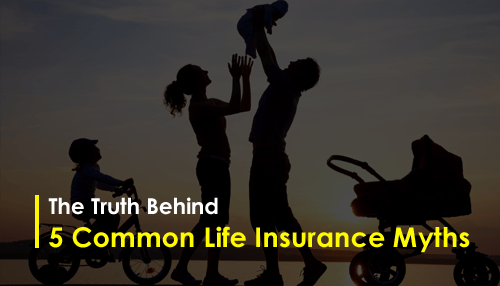There are many myths about life insurance. Who should have a policy and when can be confusing, with many Australians holding misconceptions about the product. Here we break down five of the most common life insurance myths that are holding Aussies back from purchasing a policy.
1. Life Insurance Myths – Single people don’t need life insurance.
Young, single adults often believe that life insurance is only for older people, married couples, or those with children. However, there are some compelling reasons to consider a policy before reaching important life milestones.
If you have any debts, such as a mortgage or car payment, a life insurance policy could provide money to help your next of kin pay these off if you were to pass away suddenly. This may be especially important for those who share debts with a family member, or if anyone relies on you for financial support.
You may also have time on your side. Younger adults are generally in better health and may access lower life insurance premiums. This could help you save money in the long run or help you avoid being unable to get cover later in life.
2. Only the primary breadwinner needs to be insured.
Both men and women tend to undervalue or ignore the financial contributions of the non-breadwinning partner.
Dual-income households may consider covering both partners, especially if two incomes are needed to pay the bills. However, the loss of a homemaker would have a financial impact on their family.
The services provided by a stay-at-home partner are priceless. Tasks such as childcare, cooking, and cleaning would need to be taken on by someone else and often carry a hefty price tag. Getting enough cover to help offset these new expenses could make financial sense.
3. Life cover provided through superannuation is sufficient.
Life insurance has been a part of Australian superannuation funds for decades. However, these “one size fits all” policies may not meet your individual needs. Life Insurance – Compare Cheap Life Insurance Quotes – Money Expert
Insurance provided through super is usually less than what a typical family requires. This may not be enough to protect your family’s lifestyle or to pay off large debts, such as a mortgage. There are other downsides, such as delayed payout and restrictions on who can be named as a beneficiary, which may make an individual policy more appropriate for you.
4. Once you buy a policy, you’re set for life
A “set and forget” attitude towards life insurance can be expensive and risky.
As your life changes, your insurance needs will likely change as well. Major life events often trigger a desire to increase cover—think getting married, having children, or purchasing a new home. However, you may want to consider other financial factors, such as a salary increase or regular work bonuses, which can also affect your spending or lifestyle.
There are also times when it may be appropriate to lower the amount of cover you have. Paying off a mortgage or retiring could mean less life insurance is needed to meet your financial needs.
5. Life Insurance Myths – Life insurance is too expensive.
There is a large disparity between how much people think life insurance costs and the actual cost of a policy.
A survey by the Industry Funds Forum and the Australian Institute of Superannuation Trustees found that 81 percent of consumers believe life insurance is too expensive. However, 61 percent of people also overestimated the cost of a policy. Depending on your age, gender, and health, life insurance could cost less than $1 per day.
Now that we’ve dispelled these common misconceptions about life insurance myths, it may be time to rethink your need for a policy or review an existing one.



